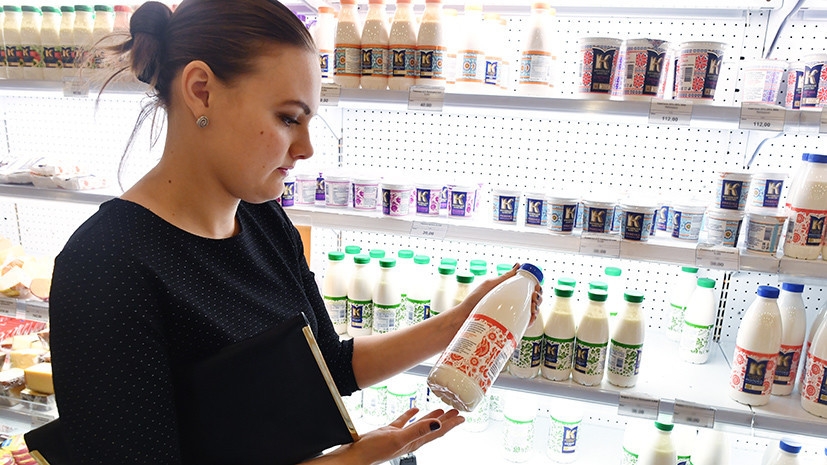On Monday, July 15, an experiment in labeling dairy products starts in Russia.
According to the idea of the authorities, manufacturers will start marking products with a special digital code. The cipher printed on the package will contain information about the product name, manufacturer, date, time and place of release. The buyer will be able to scan the code and check the goods for authenticity.
As part of the pilot project, it is planned to label milk, cream, condensed milk, yogurt, kefir, cottage cheese, cheese, butter, ice cream and milk whey. Testing of the system will last until February 29, 2020, after which the authorities will discuss the feasibility of implementing the mechanism on an ongoing basis.
According to the government decree, the experiment will be carried out by importers and manufacturers of certain types of dairy products, as well as the organization of wholesale and retail trade and the food industry.
According to experts interviewed by RT, a new method of identification will complement the already existing Mercury system. The mechanism was launched on July 1, 2018 and involves mandatory electronic certification of products of animal origin. From July 1, 2019, cheese, dried milk, butter, and canned milk are subjected to the appropriate verification, and from November 1, the rest of the products will be affected by the system.
In general, "Mercury" provides an opportunity to track the product from the farm to the factory, and the labeling - from the enterprise to the final consumer. Thus, the authorities intend to reduce the volume of illegal trade and protect consumers from poor-quality dairy products.
“Innovation will reduce the percentage of falsifications in the dairy sector. In 2018, the Rosselkhoznadzor study showed an alarming figure: 21.6% of the studied dairy products were falsified. The effect of labeling will be noticeable in the first few years since the start of the project, if the results of the experiment are satisfactory, ”said Dmitry Gelemurzin, executive director of the Goldman Group, in an interview with RT.
Reducing the volume of smuggling and trafficking of dairy products, as well as reducing the number of counterfeit goods will have to increase revenues to the state budget. About this in an interview with RT told the director of the Center for the study of the dairy market, Mikhail Mishchenko.
At the same time, he said, the need for labeling will increase the financial burden on enterprises. According to industry experts, to apply digital codes, manufacturers will have to purchase special printers and install them on each packaging line.
“To fulfill the marking conditions, it will be necessary to install tens of thousands of printers, which will require a huge amount of investment in the industry, because every QR code that will be applied costs money. In May, a government decree was issued, according to which the cost of the QR code will be 50 kopecks excluding VAT, and with VAT even more. Accordingly, according to the most modest estimates, the dairy industry alone will spend about 25 billion rubles a year on QR codes, ”added Artem Belov, general director of the National Union of Milk Producers in a conversation with RT.
According to experts, in addition to the cost of printing digital codes, manufacturers will need to increase the cost of new packaging design of their products. As a result, according to Dmitry Gelomurzin's assessment, the final cost of goods may increase by 10-12%.
However, as the analyst believes, if after the experiment the mechanism is actually introduced, the expected price increase will be short-term and will be noticeable only in the first months of the system. In addition, the possible appreciation of goods will become a kind of payment for product quality.
“Identification marks will inform the buyer about how much sugar, salt and fat are contained in a particular product. This will protect citizens from unscrupulous manufacturers who mask the poor quality of the product, misleading the end user. Now, dairy and milk-containing products will be placed in the sales areas so that the buyer can visually separate them from other food products and understand the difference, ”concluded Dmitry Gelomurzin.

